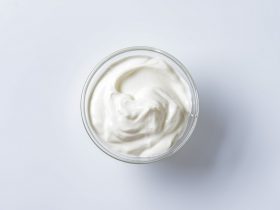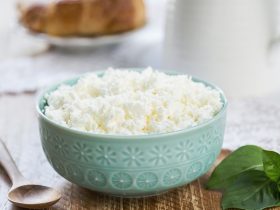Pregnancy is a special time for women and their families. During this life stage, nutrition plays an important role to support the health of the mother and her baby. As told by experts, seafood is part of a healthy diet during pregnancy.
Scallops are a type of seafood that can be safely consumed by pregnant women, as long as they were thoroughly cooked. They are low in mercury and categorized under the “best choices” for seafood consumption during pregnancy.
In this article, we will learn about the benefits of eating seafood during pregnancy. Then, we will focus on scallops in particular and the dangers that can come from its consumption. Lastly, we will find out how scallops can be made safe for pregnant women to eat.
Benefits of Seafood Consumption During Pregnancy
Seafood is a healthy source of nutrients in the human diet. It contains proteins, vitamin D, minerals like selenium, iodine (Amezcua-Prieto et al., 2018) and zinc, vitamin B12, and iron. It can also provide essential amino acids and a high content of omega-3 polyunsaturated fatty acids (PUFAs) (Manthey-Karl et al., 2015).
The European Food Safety Authority (EFSA) Scientific Committee recommends a seafood intake of 1 to 4 servings per week during pregnancy. Meanwhile, the Dietary Guidelines for Americans (DGA) 2020-2025, as well as the U.S. Food and Drug Administration (FDA) and Environmental Protection Agency (EPA), all recommend an intake of 8 to 12 ounces (or 2 to 3 servings) of seafood, from choices that are low in mercury, per week during pregnancy.
The American College of Obstetricians and Gynecologists (ACOG) promotes this advice, and recommends pregnant women to eat 2 to 3 servings of a variety of fish every week, while avoiding fish with higher mercury content. In addition, they also recommend the following:
- “Eat only 1 serving a week (no more than 6 ounces) of some fish, such as albacore (white) tuna and fish with similar mercury concentrations.”
- “Check for advisories for fish caught by family and friends and where no advisories exist, limit eating those fish to 1 serving a week and do not eat any other fish that week.”
In 2014, Chen et al. reported that an average maternal consumption of seafood amounting to 450 grams per week during pregnancy increased the IQ of their children by 0.79 to 5.7 points. Julvez et al. in 2016 demonstrated that consumption of seafood during pregnancy provides neuropsychological benefits, in terms of cognitive functioning and protection from autism spectrum traits.
Similarly, Amezcua-Prieto et al. in 2018 showed that an average intake of seafood during pregnancy of 2 to 3 servings per week (equivalent to at least 29 grams per day) reduced the risk of having a small for gestational age (SGA) infant, compared to an average seafood intake of less than 8 grams per day.
Seafood is the primary dietary source of omega-3 PUFAs for humans (Bloomingdale et al., 2010). Adequate intake of omega-3 PUFAs during pregnancy is important as it may protect against adverse perinatal and long-term child outcomes (Koletzko et al., 2007).
In 2012, Imhoff-Kunsch et al. reported that omega-3 PUFA supplementation in pregnancy resulted in reduced risk of early preterm birth and a slight increase in birth weight, illustrating that intake of omega-3 PUFAs during pregnancy lengthens the gestation time. Omega-3 PUFAs also affect fetal body composition. Pereira-da Silva et al. in 2015 showed that maternal DHA intake was associated with an increase in birth size in male infants and increase in fat mass in female infants.
The omega-3 PUFAs docosahexaenoic acid (DHA) and eicosapentaenoic acid (EPA) are the most significant during pregnancy because they pass through the placenta into the fetal circulation (Amezcua-Prieto et al., 2018). DHA is particularly important for optimal fetal neurodevelopment (Koletzko et al., 2007). Pregnant women are advised to aim for an average intake of at least 200 milligrams of DHA per day from their diet (Koletzko et al., 2007).
There are three categories of seafood: lean fish, fatty fish, and shellfish (which includes mollusks, crustaceans and cephalopods) (Guldner et al., 2007). According to the NHS, pregnant women can eat shellfish, including mussels, lobster, crab, prawns, scallops and clams, as long as they are cooked.
The European market for scallops has increased significantly in the recent years. Scallops are marketed either in shells or as shucked muscle meats (after removing shells and intestine), and can be sold either fresh or deep frozen (Manthey-Karl et al., 2015). Shellfish and fatty fish contain a higher content of omega-3 PUFAs than lean fish (Amezcua-Prieto et al., 2018).
In 2018, Amezcua-Prieto et al. demonstrated that shellfish intake of more than once per week provided a protective effect against an SGA newborn. In the same manner, the risk of an SGA newborn was lower in pregnant women who consumed more than 1 gram per day of omega-3 PUFAs from seafood, compared to those who consumed less than 0.4 grams per day.
What are Scallops?

Scallops are a bivalve mollusk. Similar to oysters, mussels and clams, the interior muscle in scallops is surrounded by two shells. The muscle is round and tender when cooked, and it has a taste of sweetness with briny saltiness.
There are two types of scallops: bay scallops and sea scallops. Bay scallops are smaller and are about the size of a dime, while sea scallops are larger and can grow up to two inches wide. Bay scallops can be found in bays, estuaries, and shallow waters on the East Coast, as they live in the seagrasses. On the contrary, sea scallops are found globally in deep, cold ocean waters of up to 200 meters deep.
Scallops are high in nutrients and protein. There are different species of scallops, but all are low in mercury content. These include queen scallop, spiny scallop, weathervane scallop, Atlantic calico scallops, farmed bay scallops, common Japanese scallops, and dredged US and Canada Atlantic sea scallops.
Dangers from Consumption of Scallops
Chemical and Pollutant Exposure
The concentrations of chemicals and toxic pollutants differ in different species of fish and shellfish (Amezcua-Prieto et al., 2018). Seafood contains dioxins and polychlorinated biphenyls (PCBs), which are mainly found in cod liver and fish oils (Blanco et al., 2013). Seafood may also be contaminated with mercury, a neurotoxin to which the developing fetal brain is particularly sensitive (Bloomingdale et al., 2010).
Mercury is able to cross the placenta and alter fetal neurodevelopment (Vejrup et al., 2016). During pregnancy, exposure to mercury for an extended period of time can be harmful to the developing brain and nervous system of the fetus.
Vejrup et al. in 2016 reported an association between high prenatal mercury exposure above the 90th percentile and delayed language and communication skills, particularly unintelligible speech and weaker communication competency.
That is why both US FDA and EPA advise pregnant women to choose seafood species that are low in mercury content. The EFSA, likewise, recommended that seafood species with high mercury content be avoided during pregnancy (Amezcua-Prieto et al., 2018).
Jacobs et al. in 2017 reported high levels of mercury in tuna, sea bass, sea bream, monkfish, hake and octopus. Larger fish, including tilefish, swordfish, shark and king mackerel, tend to have higher mercury content.
Meanwhile, scallops are among the seafood types with the lowest mercury levels. According to the US FDA, scallops contain an average of only 0.003 parts per million (ppm) of mercury. Similarly, Jacobs et al. in 2017 reported low levels of mercury in clams and mussels.
Food Borne Illnesses
A food borne illness can happen in two ways (Bintsis, 2017):
- When a pathogen is ingested together with food and it establishes itself or multiplies in the human host
- When a toxigenic pathogen contaminates a food product and produces a toxin, and the food is ingested with the toxin by the human host
Infections associated with seafood consumption are caused by a variety of bacteria, viruses and parasites (Iwamoto et al., 2010). The most important that are transmitted through seafood intake are Listeria monocytogenes, Vibrio parahaemolyticus, Staphylococcus aureus, and Salmonella species (Zarei et al., 2012).
In the United States, Shigella was the causative organism linked to 12 seafood-associated outbreaks, which caused more than 400 illnesses and 20 hospitalizations. Implicated food sources were fish, raw oysters, scallops and crab (Iwamoto et al., 2010). In 2017, Bintsis et al. demonstrated that for Vibrio parahaemolyticus, food sources implicated as sources of transmission are crabs, prawns, scallops, seaweed, oysters and clams.
In 2018, Viray et al. reported a food borne Hepatitis A virus outbreak, which happened in Hawaii in 2016, of which 292 individuals were confirmed cases, 74 were hospitalized and 2 died. The cause of the outbreak was found to be consumption of contaminated raw scallops from a single restaurant.
Are Scallops Safe for Pregnant Women to Eat?
Scallops belong to the list of “best choices” for seafood consumption, according to the US FDA, because they have low mercury content. However, raw scallops can contain bacteria, viruses and toxins. According to the NHS, pregnant women should avoid raw shellfish because of the risk of developing food poisoning from them.
Therefore, pregnant women must avoid eating the following seafood dishes:
- All raw fish and shellfish – including sushi, sashimi, ceviche and raw oysters, scallops and clams
- Refrigerated, uncooked seafood – including those labeled as nova style, lox, kippered, smoked or jerky
Smoked seafood can be eaten safely only if it is an ingredient in a casserole or any other cooked dish.
Similarly, the following scallop dishes should be avoided during pregnancy:
- Scallop ceviche – scallops are cured in acid like citrus juice, rather than being cooked with heat
- Scallop tartare – raw scallops are minced and seasoned, and not cooked
- Scallop sashimi – scallops that are eaten raw
When eating out in a restaurant, keep in mind that pan searing is a popular method for cooking scallops because it makes them stay tender. However, this method of cooking does not properly heat the insides of the scallops, so they tend to be raw. Hence, pregnant women should also avoid eating pan-seared scallops.
On the other hand, cooking seafood will kill any parasites, bacteria or other harmful microorganisms that may be present, making them safe for pregnant women to eat. All households must follow the food safety recommendations by the US FDA. These basic practices reduce the risk of food borne illnesses:
- Clean – Wash surfaces, counter tops, utensils, and hands often.
- Separate – Separate raw seafood from other foods.
- Cook – Cook food to reach the recommended safe internal temperature.
- Chills – Refrigerate foods promptly
As long as they have been properly prepared and cooked, scallops are a safe and healthy addition to a pregnant woman’s meal. Just make sure to cook scallops all the way through until they become milky white. Grilling or baking scallops can ensure that they get thoroughly cooked.
When cooking scallops, check that an internal temperature of at least 145 degrees Fahrenheit (or 63 degrees Celsius) is reached. Lastly, pregnant women should avoid scallops that were harvested from waters with unknown levels of contamination.
Final Thoughts
Scallops can be a safe and nutritious seafood dish during pregnancy. Several agencies, including the US FDA, EPA and ACOG, advise pregnant women to consume 2 to 3 servings of seafood per week. Pregnant women should also aim to achieve an intake of at least 200 milligrams of DHA per day.
Just make sure that your scallops are fresh and have been properly prepared and cooked. An internal temperature of at least 145 degrees Fahrenheit can effectively kill any potential pathogen that may be present in scallops. Pregnant women should avoid all raw and undercooked seafood to prevent food borne infections.
All pregnant women should discuss with their obstetrician-gynecologists or other obstetric providers the quantity and quality of their seafood intake to ensure that they avoid any harmful effects to their unborn baby.
References
- https://www.healthline.com/
- https://www.dietaryguidelines.gov/
- https://www.fda.gov/
- https://www.mayoclinic.org/
- https://www.nhs.uk/
- https://www.fda.gov/
- https://seafood.edf.org/
- https://www.southernliving.com/
- Amezcua-Prieto, C., Martinez-Galiano, J. M., Salcedo-Bellido, I., Olmedo-Requena, R., Bueno-Cavanillas, A., & Delgado-Rodriguez, M. (2018). Maternal seafood intake and the risk of small for gestational age newborns: A case-control study in Spanish women. BMJ Open 8(8), e020424. doi: 10.1136/bmjopen-2017-020424
- Bintsis, T. (2017). Foodborne pathogens. AIMS Microbiology 3(3), 529-563. doi: 10.3934/microbiol.2017.3.529
- Blanco, L., Martinez, A., Ferreira, M., Vieites, J., & Cabado, A. (2013). Polychlorinated dibenzo-p-dioxins and dibenzofurans (PCDD/Fs) and dioxin-like polychlorinated biphenyls (dl-PCBs) in fish, seafood products and fish oil in Spain. Food Additives & Contaminants: Part B, Surveillance 6(3), 218-230. doi: 10.1080/19393210.2013.804590
- Bloomingdale, A., Guthrie, L., Price, S., Wright, R., Platek, D., Haines, J., & Oken, E. (2010). A qualitative study of fish consumption during pregnancy1,2,3. The American Journal of Clinical Nutrition 92(5), 1234-1240. doi: 10.3945/ajcn.2010.30070
- Chen, M. Y., Wong, W. W., Chung, S. W., Tran, C. H., Chan, B. T., Ho, Y. Y., & Xiao, Y. (2014). Quantitative risk-benefit analysis of fish consumption for women of child-bearing age in Hong Kong. Food Additives & Contaminants: Part A, Chemistry, Analysis, Control, Exposure & Risk Assessment 31(1), 48-53. doi: 10.1080/19440049.2013.855947
- Guldner, L., Monfort, C., Rouget, F., Garlantezec, R., & Cordier, S. (2007). Maternal fish and shellfish intake and pregnancy outcomes: A prospective cohort study in Brittany, France. Environmental Health 6, 33. doi: 10.1186/1476-069X-6-33
- Imhoff-Kunsch, B., Briggs, V., Goldenberg, T., & Ramakrishnan, U. (2012). Effect on n-3 long-chain polyunsaturated fatty acid intake during pregnancy on maternal, infant, and child health outcomes: A systematic review. Paediatric and Perinatal Epidemiology 26 Suppl 1, 91-107. doi: 10.1111/j.1365-3016.2012.01292.x
- Iwamoto, M., Ayers, T., Mahon, B., & Swerdlow, D. (2010). Epidemiology of seafood-associated infections in the United States. Clinical Microbiology Reviews 23(2), 399-411. doi: 10.1128/CMR.00059-09
- Jacobs, S., Sioen, I., Jacxsens, L., Domingo, J., Sloth, J., Marques, A., & Verbeke, W. (2017). Risk assessment of methylmercury in five European countries considering the national seafood consumption patterns. Food and Chemical Toxicology 104, 26-34. doi: 10.1016/j.fct.2016.10.026
- Julvez, J., Méndez, M., Fernandez-Barres, S., Romaguera, D., Vioque, J., Llop, S., …, & Sunyer, J. (2016). Maternal consumption of seafood in pregnancy and child neuropsychological development: A longitudinal study based on a population with high consumption levels. American Journal of Epidemiology 183(3), 169-182. doi: 10.1093/aje/kwv195
- Koletzko, B., Cetin, I., Brenna, J. T., Perinatal Lipid Intake Working Group; Child Health Foundation; Diabetic Pregnancy Study Group; …; International Society for the Study of Fatty Acids and Lipids. The British Journal of Nutrition 98(5), 873-877. doi: 10.1017/S0007114507764747
- Manthey-Karl, M., Lehmann, I., Ostermeyer, U., Rehbein, H., & Schröder, U. (2015). Meat composition and quality assessment of king scallops (Pecten maximus) and frozen Atlantic sea scallops (Placopecten magellanicus) on a retail level. Foods 4(4), 524-546. doi: 10.3390/foods4040524
- Pereira-da Silva, L., Cabo, C., Moreira, A. C., Papoila, A. L., Virella, D., Neves, R., …, & Cordeiro-Ferreira, G. (2015). The effect of long-chain polyunsaturated fatty acids intake during pregnancy on adiposity of health full-term offspring at birth.
- The American College of Obstetricians and Gynecologists. (2017). Update on seafood consumption during pregnancy: Practice advisory. https://www.acog.org/clinical/clinical-guidance/practice-advisory/articles/2017/01/update-on-seafood-consumption-during-pregnancy
- Vejrup, K., Schjølberg, S., Knutsen, H. K., Kvalem, H. E., Brantsӕter, A. L., Meltzer, H. M., …, & Haugen, M. (2016). Prenatal methylmercury exposure and language delay at three years of age in the Norwegian Mother and Child Cohort Study. Environment International 92-93, 63-69. doi: 10.1016/j.envint.2016.03.029
- Viray, M. A., Hofmeister, M. G., Johnston, D. I., Krishnasamy, V. P., Nichols, C., Foster, M. A., …, & Park, S. Y. (2018). Public health investigation and response to a hepatitis A outbreak from imported scallops consumed raw: Hawaii, 2016. Epidemiology and Infection 1-8. doi: 10.1017/S0950268818002844
- Zarei, M., Maktabi, S., & Ghorbanpour, M. (2012). Prevalence of Listeria monocytogenes, Vibrio parahaemolyticus, Staphylococcus aureus, and Salmonella spp. in seafood products using multiplex polymerase chain reaction. Foodborne Pathogens and Disease 9(2), 108-112. doi: 10.1089/fpd.2011.0989




